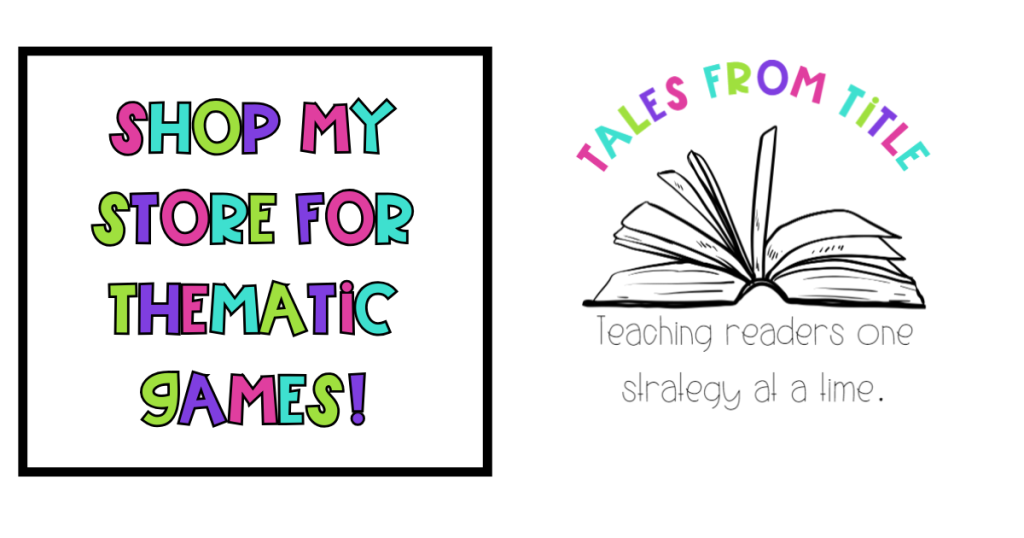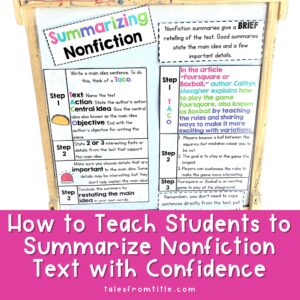As a 90’s kid, I always thought quicksand would be a more significant problem in my life than it actually has been. However, as a teacher, the metaphorical quicksand is very real. The never-ending to-do list, paired with an insane lack of time, has most of us teachers trying to figure out how to save ourselves from the quicksand trap.
In my last blog post, we discussed how thematic units can be a beneficial tool in the elementary classroom. However, what if you don’t have the time, resources, or district approval to utilize thematic units? One way to work around these obstacles is to integrate thematic games into your class or small groups.

The Benefits of Thematic Learning
Integrating thematic learning in the elementary classroom comes with many benefits. First, when teachers utilize thematic units, students’ engagement improves because they are interested and want to learn more about a topic. Thematic units also foster a deeper understanding of topics because you are weaving this theme into your entire day. As a result, students are immersed in the topic throughout the day, enhancing their vocabulary and encouraging them to think more critically about the subject.
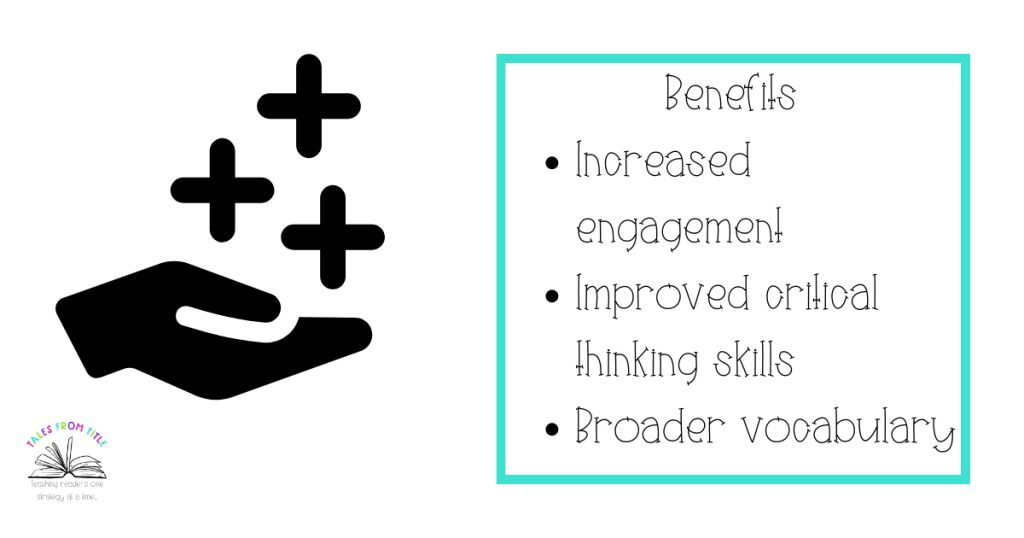
The Challenges that Come with Thematic Learning
While there are many benefits to teaching using thematic units, the actual implementation of them can be challenging, to say the least. Planning thematic units takes time, something that is in very short supply for almost every teacher. Another challenge teachers face with thematic units is a lack of support from their district. Most districts have a curriculum they want you to adhere to, probably with a pacing guide you are expected to stick to. However, you can still incorporate themes even if you are short on time and support from your district.
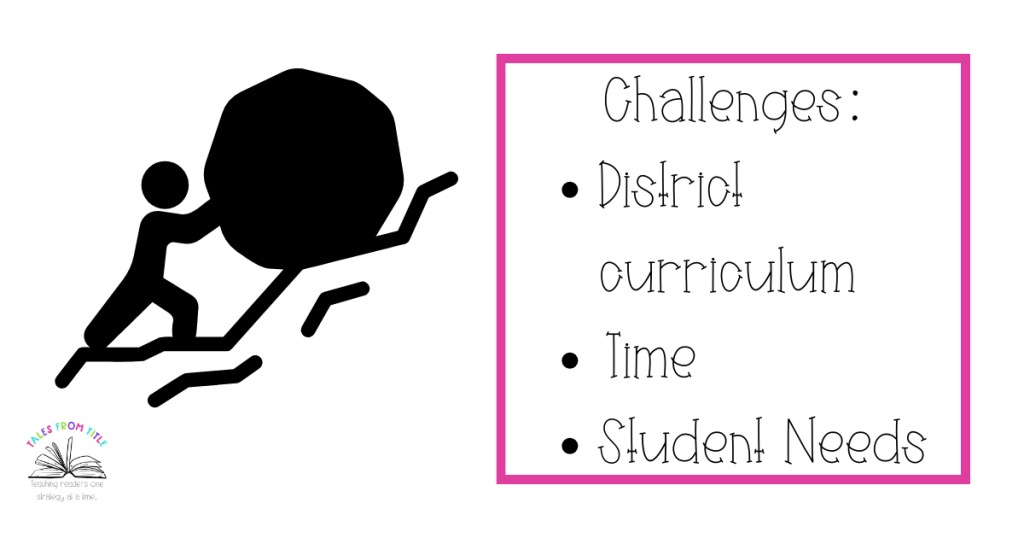
Reading Games as a Solution
While you may not be able to incorporate thematic units into your classroom, there are still ways to utilize themes to help your students learn more about topics. Today I want to take a look at one of them – games. Games are a great way to engage your students while working on ELA skills.
You can incorporate themes into just about every reading skill your students may be working on. The trick is to target the reading skill students need to work on while weaving in the thematic concept you want them to learn more about. When aligned with the standards you need to meet, reading games not only get students excited about reading but also provide a unique way for students to explore thematic topics within the constraints of your current curriculum. Not only will students benefit from a learning experience beyond paper, pencil, and text, but you will also find practical ways to incorporate thematic learning in your classroom.
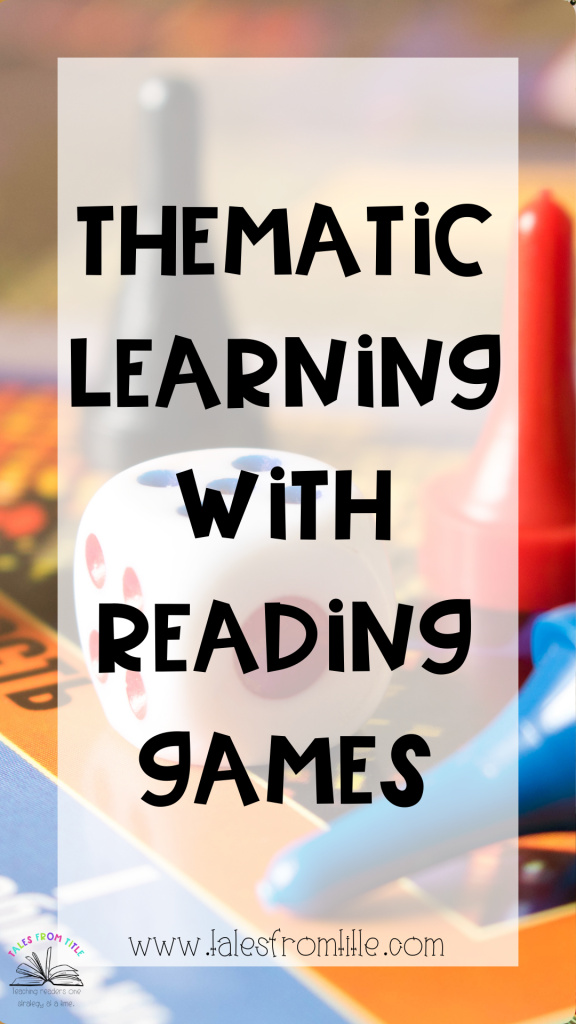
Practical Tips for Implementing Reading Games
Incorporating reading games into your classroom successfully involves a strategic approach. Begin by choosing themes that coordinate with holidays, student interests, or topics you want students to know more about. Then, either search for games on TPT or similar platforms that cover these themes or design your own games using the topic you choose. You can easily differentiate these games for your classroom by using an AI tool to help you quickly adjust the reading level of the game, tailoring and providing appropriate challenges for all of your students. By implementing these practical tips, you can not only make reading games an integral part of your teaching arsenal but also provide a customized and enriching educational journey for every student.
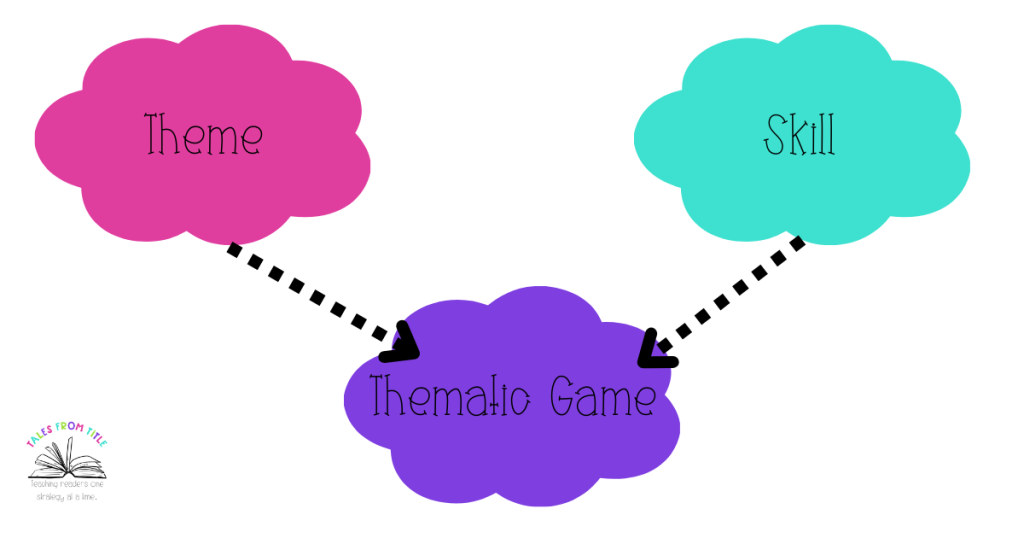
Overcoming District Restrictions
Navigating district restrictions can be daunting, but you can utilize effective strategies to overcome these challenges. To gain support from your administrators, it is essential to articulate the benefits of incorporating thematic topics with reading games. Emphasize how this approach aligns with curriculum objectives and enhances student engagement. Furthermore, you can collaborate with colleagues to build a compelling case for thematic learning. Sharing success stories, aligning proposed activities with educational standards, and presenting a united front with your team can significantly influence administrative decision-makers. A well-thought-out argument for your case can pave the way for a more flexible and enriched learning environment within the confines of district restrictions.

Getting Started with Reading Games
Once you have the go-ahead from your district, it’s time to start implementing thematic games in your classroom. Here is a list of steps:
1. Decide on a theme.
2. Choose a focus skill (fluency, phonics, comprehension, vocabulary, math facts, etc.).
3. Determine if you are going to make the game or if you will look for a game that has already been created.
4. If you are looking for premade games, check out websites like TPT, Boom Learning, or Kahoot.
5. If you are creating your own game, design your board and create your questions.
6. Play your game!
Conclusion
In today’s classroom, where endless to-do lists and time constraints pose a challenge for teachers, the need for creative solutions is necessary. While thematic units offer significant benefits, the hurdles of time, resources, and district approval may hinder their implementation. But by utilizing a practical workaround and implementing thematic games, you can not only engage students and enhance ELA skills but also navigate the challenges posed by time constraints and district restrictions.
Looking for done-for-you thematic games you can implement in your classroom? Check out my store!
